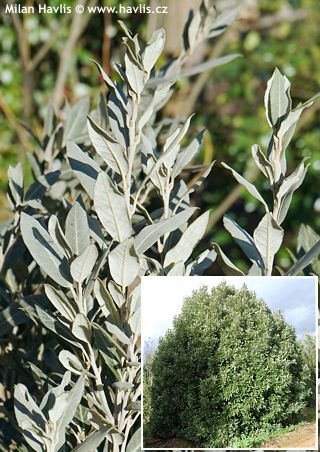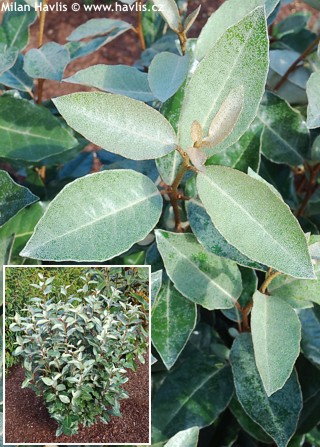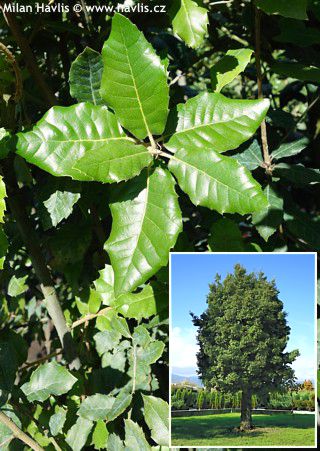Quercus ilex 'MATTEINI' holm oak, holly oak
size/type
taller shrub,medium-sized tree
usual height
4-12m
usual width
4-8m
leaves
evergreen broadleaf
colour of leaves
flowers
insignificant or non-blooming
location
full sun
soil type
any (acidic to alkaline)
soil moisture requirements
evenly moist (dislikes drought)
USDA zone (lowest)
7 (down to -23°C)
winter protection
for zone 5+6

for zone 7

categorized
Quercus
Holm oak or holly oak (holm is an old word for holly) is native to the Mediterranean and is spread from southern parts of Italy, France, Spain and Portugal, to west Balkan and milder parts of North Africa. It used to form vast areas of evergreen forests most of which are chopped down today. It was first described in 1753 and many sources until this day claim it is not drought tolerant. In fact it very drought tolerant once established which why it is commonly cultivated in heat-accumulated and paved city squares. In the wild it grows in altitudes from 0 to 1400 m above sea level.Description of the plant:
Holm oak is a natural species, not a hybrid in spite of two specific names in its Latin title. Around 2000 Tranquillo Matteini discovered a single seedling of different characteristics in his nursery in Pistoia, Italy. After a few years of growing and testing it turned into a beautiful tree with larger foliage and well-behaved habit, and in 2009 underwent its first hardiness trial during an extremely cold winter. The plant received a variety name Matteini and a plant patent was applied for.Matteini holm oak makes larger leaves compared to the species. They are 8-10 cm long, evergreen, oval to broadly elliptic, olive green and partially glossy above, silvery hairy underneath, and leathery. They emerge bright silvery grey in spring. Completely spinefree. Older trees produce small, elongated, dark brown, glossy acorns.
Young plants grow relatively fast, making some 40-50 cm per year in strictly upright, almost fastigiate habit. It turns to broadly oval shape with age if grown as a shrub. Trees form an almost rounded canopy which is very dense without pruning and cast a deep shade so desired in hot summers. Shrubs are used as long-lived hedges and windbreaks.
Holm oak is not too picky about soil type provided it is well drained. It can even take less fertile soil. Never plant it in heavy clay and water-logged sites where its roots may rot. Even moisture is needed in the first season after transplanting, then it will do with occasional rain. It loves sun and warmth, never plant it in exposed areas of zones 6 borderline. For cultivation in Central European conditions always look for plant with hardened wood which is not prone to frost damage. Pruning is possible in early spring. Matteini is significantly hardier than the species and has proved hardy down to -23°C (USDA zone 6).
Last update 29-08-2020
WANT TO TRY A SIMILAR PLANT?









































